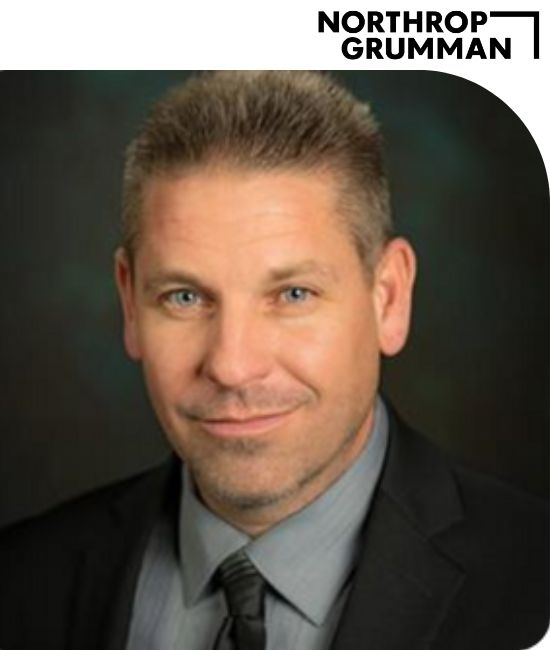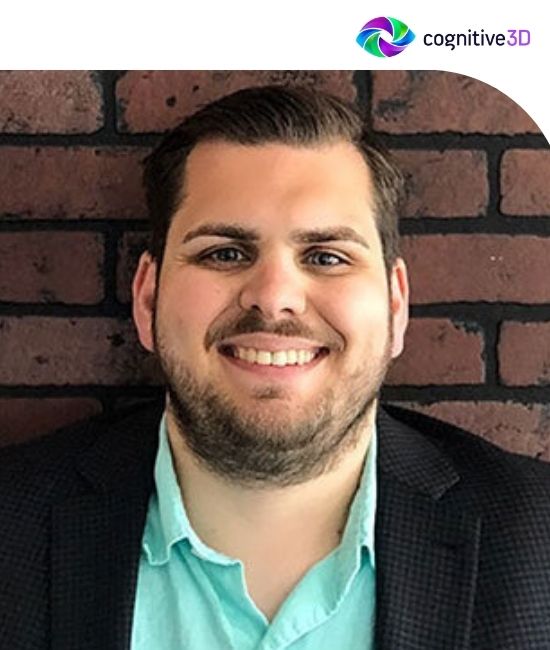09:00 AM - 09:25 AM
Description
The Boeing Augmented Reality Kit (BARK) has been in development since late 2017 to the present day, and has evolved from a single offline use case to a connected, scalable, secure platform that supports many manufacturing processes at Boeing.
This presentation will begin with a short high level overview of BARK for those that may not be familiar with it, and will cover its four applications for the Microsoft HoloLens, their use in the factory, the Services layer for managing and translating data, and the production systems it interfaces with. Following the introduction, the presenter will discuss new patented methods of aligning AR content to both small and large structures (e.g. aircraft) that have been implemented across BARK, and the results of testing performed inside a large commercial aircraft to determine alignment accuracy across the entire fuselage. Finally, the presentation will discuss how BARK has been replicated and tested, piloted, and/or used in production on approximately 22 use cases across every major Boeing manufacturing site and the impact it is having.
Speakers

09:30 AM - 09:55 AM
Description
The presentation will introduce the groundbreaking VR & AR training application and simulators that we have developed for the nuclear power plant in Toronto, Canada. We will cover the design process and rationale behind the XR training applications, the development process, limitations and their solutions, as well as lessons learned while working in this demanding and hazardous environment. We will also touch on the importance of muscle memory, of removing abstractions and on how these XR apps were received and subsequently adopted by the nuclear power industry.
Speakers

10:00 AM - 10:25 AM
Description
As XR platforms become more constrained by their own closed ecosystems, standards such as WebXR have enabled the creation of new, interoperable user experiences that not only facilitate the consumption of 3D contents, but also enable their creation by taking advantage of the new interaction mechanisms (from the better depth perception that stereoscopic displays allow by default, to the multi-finger tracking solutions than more recent systems allow). Yet, the development of such tools is still a complicated process due to the different input mechanisms and hardware capabilities, making the definition of a common set of interaction techniques a sisyphean task. Against this background, IFE has been working on a framework that aims to simplify the creation of 3D editors for WebXR-enabled browsers, enabling end-users to intuitively create 3D scenes without the limitations of previous interaction paradigms. As the main developer behind this novel framework, Mikel Salazar will showcase the features of this novel framework and present several use cases where it has been applied.
Speakers

10:30 AM - 10:55 AM
Description
Digitizing large physical spaces in Augmented Reality holds tantalizing possibilities across industries. Join us for lessons learned from the digitization of Building Construction Projects. Learn about how to leverage your enterprises' existing building assets to make project management and inventory data spatial & how to use your physical space to design efficient AR workflows. Finally, we'll dive into tech challenges implementing AR in large areas and how to overcome them--including drift, repetitive elements, and vertical travel.
Speakers


11:20 AM - 11:45 AM
Description
Aerospace manufacturing and maintenance, in even the most modern contexts, is dependent upon the successful execution of often complex and technically challenging processes by talented and properly trained technicians. Traditionally, learning these skills has required extensive classroom, lab, and on-the-job training based on static presentations and reference manuals. Once developed, deployment of these skills on the assembly line or in the maintenance hangar has further relied on “rectangular” reference information to provide guidance as to locations, dimensions, or process sequences critical to achieving quality results. What could a new approach using XR-based, contextually aware, and interactive presentations of technical information, in-situ, contribute to support initial learning and development for new employees, recurrent and differences training, and to provide “heads-up” guidance of the technician as to process flow and critical reminders? How might additional information fed from integrated IoT-enabled hand tools to this presentation provide further knowledge to the technician, enabling greater autonomy, decision making, and higher quality outcomes at lower cost? And, how could aggregation of this data into modern QMS and ERP systems efficiently record as-built quality data and unlock opportunities for process optimization? As aerospace manufacturing and maintenance endeavors to become more agile and the industry solves the simultaneous challenges of generational change and building the scale the workforce necessary to enable new markets like Advanced Aerial Mobility (AAM), we believe that XR and IoT have much to offer the industry, and particularly the talent, of tomorrow.
Speakers

01:15 PM - 01:40 PM
Description
Construction is a wasteful industry ripe for improvement: half of the energy consumed by buildings is wasted, and half of construction costs are waste. This is exacerbated by a chronic shortage of skilled construction labor. Our attempts to mitigate these three crises in sustainability, affordability, and equity lead us to seek new solutions to enable more effective decision-making as we digitize our construction processes. Augmented Reality enables our construction installation crews to leverage spatially-contextual data just-in-time and just-in-place, at the point of action where and when it matters most.
We will discuss a recent joint pilot project by McKinstry and Spectar, in which we used immersive AR hardware and software to support several AR use cases and objectively measure their impact upon commercial construction. In addition to empowering our construction managers to increase engagement with the owner and other project stakeholders, we leveraged AR to improve installation and quality control. Our AR-based hanger installation effort is especially noteworthy, as it enabled us to address sustainability with paperless construction, affordability by significant reducing time to complete, and equity by empowering lower-skilled labor crews. Finally, we have identified other new use cases for AR, supporting prefabrication in the shop and facility operations and maintenance.
Speakers


01:45 PM - 02:10 PM
Description
Ask any teaching or training professional, they would argue that the success of their students isn’t just about maximizing the speed at which they learn, but that they pay attention for enough time. Homework is designed for that purpose: to force you to spend enough time paying attention to the subject. For employee training programs it is a bit more complicated: while some are scored with tests, they have found that real world training success rates track closer on training “engagement” — a measure of how much attention was paid. Indicators of real world success rates include time to first satisfactory “production” execution, mean time between execution failure, and rework rate.When visually engaging training tools are used, net success rates go up, and training times to reach competency go down. And that is why augmented reality works so brilliantly for training. It is both engaging and visual, a stimulating graphical superposition of the computer world on top of the real one. When you add the standard internet advantages of anytime & anywhere, you open up order-of-magnitude gains to your organization.
Speakers



02:35 PM - 03:00 PM
Description
Virtual reality (VR) implementations greatly matured over the past few years and it's been able to transform the way people learn. Enterprises are now forced to adopt VR to provide the best training for their employees. To take full advantage of VR training, it needs to be connected to the rest of the organization and included in the employee’s daily learning experience.
But taking VR from proof of concept to scale comes with challenges. Previously, enterprises only needed to focus on exploring the viability of VR. In order to deploy VR training at scale, they need to demonstrate its effect on the bottom line. You need a comprehensive method for tracking and measuring success within VR. The outcomes should be mapped against processes, objectives and compliance requirements. Then tied into existing legacy learning management systems. (LMS)
This presentation will walk through the three stages of scaling VR training: implementation, measurement and distribution. The successful deployment of VR training will depend on support from stakeholders and solving real business challenges. This presentation will also take an in-depth look at our case study with a medium-sized power utility company in the US where we increased knowledge retention by 59% and compliance by 40%.
Speakers
